What Is Brand Storytelling?
Brand storytelling employs narrative to establish an emotional link between a company and its clients. This allows a better understanding of who the firm is and represents customer engagement on a personal scale, emphasizing the importance of a brand's identity. By surrounding their products or services with a story, companies make it easier for customers to relate with them more deeply.
Brand storytelling involves developing a brand identity for your company that speaks directly to your target market. Every successful brand has an amazing story behind it that communicates its core values and mission in easily relatable ways. A clear brand's mission guides the purpose of the brand and connects with its target audience, enhancing brand authenticity and trust.
The trick here is to connect to your client’s emotions, be it joy, nostalgia, inspiration, or otherwise, through telling stories that resonate with them emotionally. Creating an enticing corporate brand narrative requires you to know what sort of corporate story you intend to tell.
Are you showing how your brand differs from that of others? What does your organization stand for? What do you desire people to associate with your business? These answers help inform conversations around the types of stories that should be told about our brands, ensuring a consistent brand voice.
Source: LinkedIn
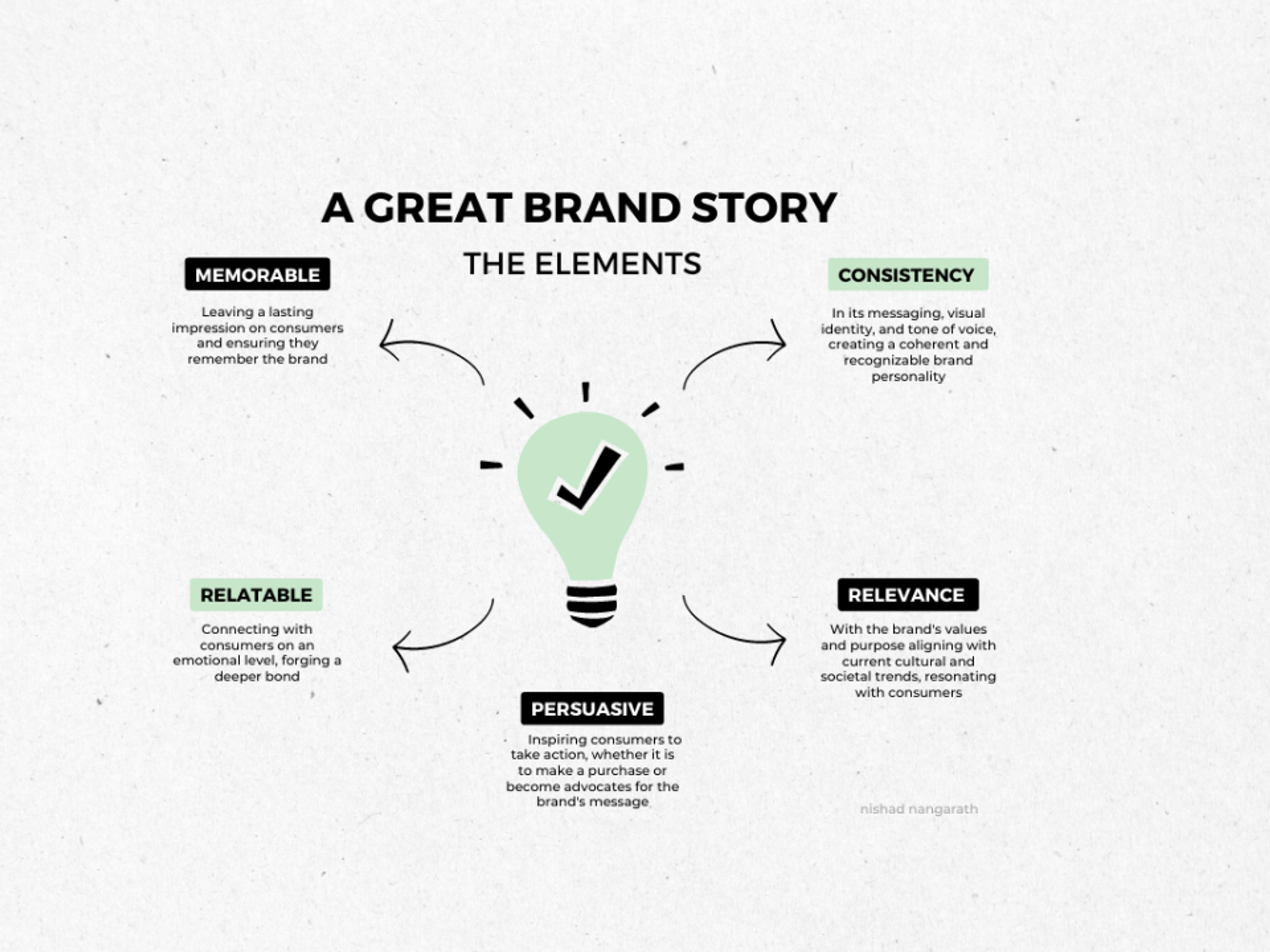
Once you have decided on the kind of tale you want to share with your audience, start writing it now! This may include inventive copywriting about interesting facts or anecdotes emphasizing key messages concerning one’s firm.
Besides, it is important to include visuals like pictures, video clips, or infographics, which can help make your stories more appealing than words alone.
When done correctly, brand storytelling can effectively create relationships with target audiences and, over time, grow loyal followings around brands.
By investing in high-quality content and developing engaging and emotionally resonant stories with users, businesses can unlock new growth opportunities they never knew existed.
The Power of Brand Story
A brand's story has the power to captivate and inspire your target audience, setting your brand apart from the competition. By sharing your brand’s story, you can create an emotional connection with your customers, fostering loyalty and trust.
A strong brand story can also help to differentiate your brand, making it more memorable and relatable. In today’s digital age, a brand story is no longer a nicety, but a necessity for any successful marketing strategy.
Why Brand Storytelling Is Important
Boosts Brand Awareness and Engages the Audience
According to a Corporate Executive Board (CEB) report, strong brand storytelling can increase the worth of a product or service by up to 20 times more than just stating its features and advantages.
Brand storytelling is important for businesses because it can increase awareness of the brand and establish closer relationships with the audience.
Companies that can make users’ stories emotionally appealing have an opportunity to create a strong bond with their customers. This is critical, considering several choices available to consumers today within the digital era.
Regarding your target audience, storytelling helps build an image for your business. By showing why they are different from others while writing engaging content and compelling narratives about themselves, companies can show why they matter.
Source: Flipsnack
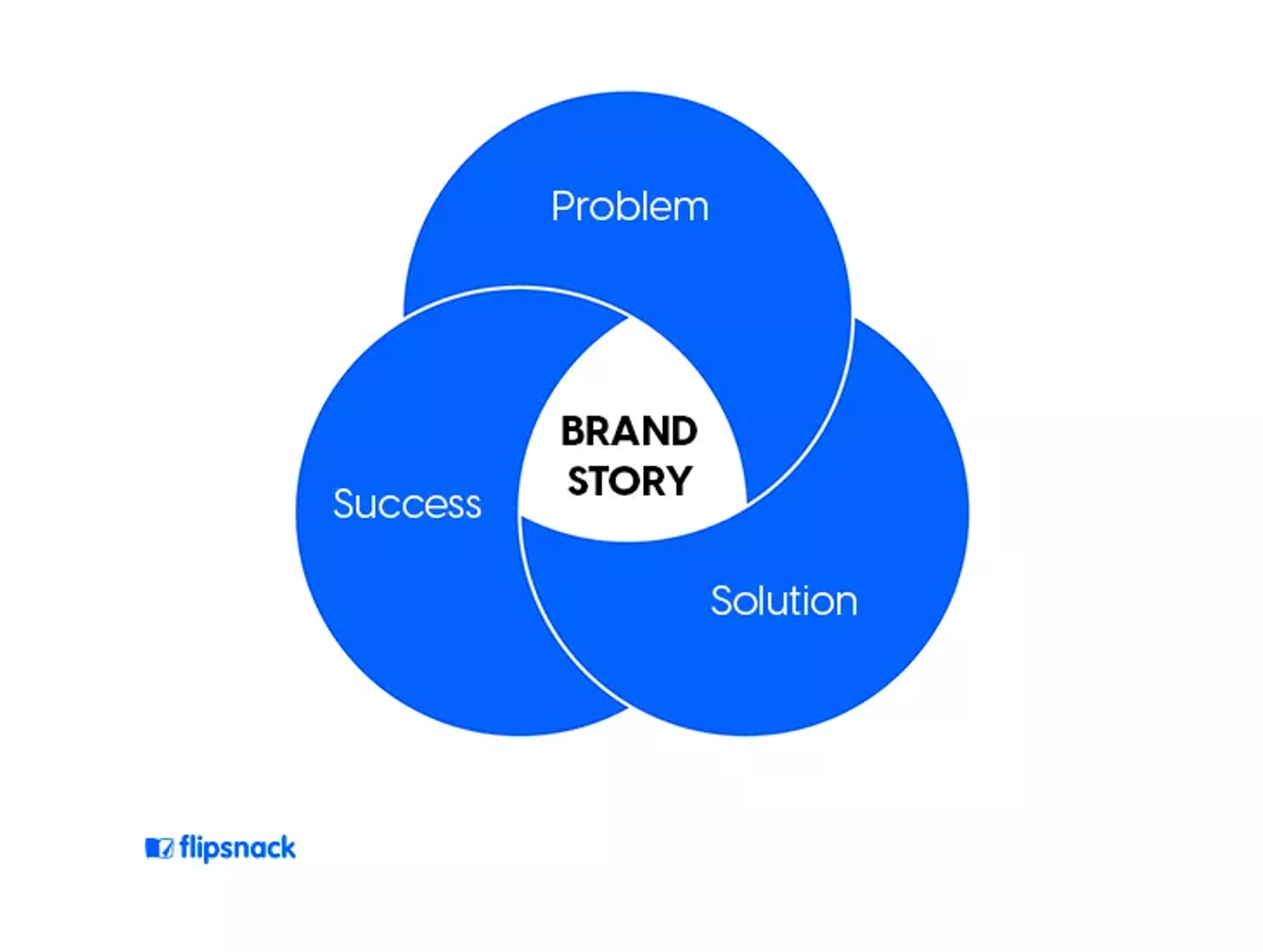
Creates Loyalty and Trust
Brand storytelling is about creating an engaging narrative to build brand loyalty and building loyalty and trust with customers. Understanding why a brand exists is fundamental to shaping this narrative.
For example, it involves frequently engaging in conversations with the target audience through relevant content. In addition, storytelling enables businesses to offer different meanings of their brand’s values compared to competitors.
Businesses can create memorable user identities, causing a return effect by strong, informative, emotionally charged stories. The emotional connection becomes stronger when people know more about the company’s past and significant moments and some personal life details of its employees.
As such, customers develop deep personal connections with organizations, which help them understand their motives and objectives, thus leading to trust and loyalty.
Source: Loomly
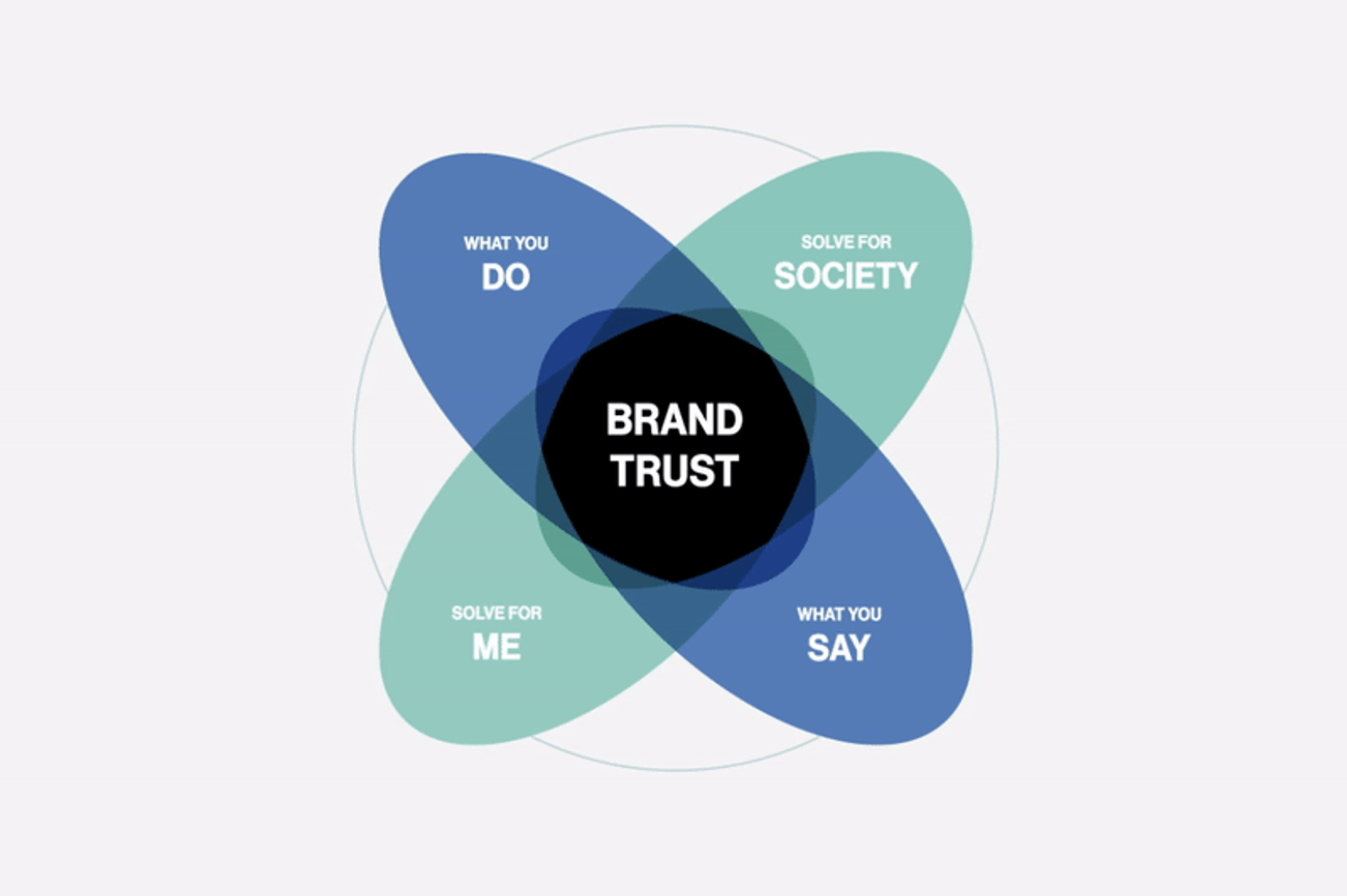
Increases Engagement
Research conducted by OneSpot reveals that personal storytelling can increase branded content engagement by up to 300%.
Integrating storytelling within the branding strategy allows businesses to increase their connection with their customers by creating relevant and interesting content.
By supplying enjoyable stories and visuals, companies will be able to get attention more easily and maintain the involvement of these users for a longer time. Moreover, it offers an opportunity to strike a chord with target groups to connect better.
A compelling brand’s story can significantly increase engagement with the audience. By incorporating personal anecdotes or experiences while highlighting an organization’s innate qualities, enterprises can tell a compelling story that resonates at a deeper level with people, thus increasing engagement over time.
In addition, storytelling helps companies create content that is more efficient when it comes to meeting the specific needs and interests of their target audience.
By understanding what motivates and interests users, businesses can craft stories tailored to their preferences, making it more likely for customers to stay tuned in.
Furthermore, companies can employ this approach through quizzes or Polar, allowing them to interact with customers who may provide feedback on their experiences, hence building relationships between the brand and its consumers.
Lastly, storytelling is important for reaching larger audiences as organizations today shift from text-based communications to visual content like videos.
This way, businesses carve out a niche market segment by providing unique information that grabs clients’ attention faster, unlocking opportunities for greater success.
Source: Maria Peagler Digital
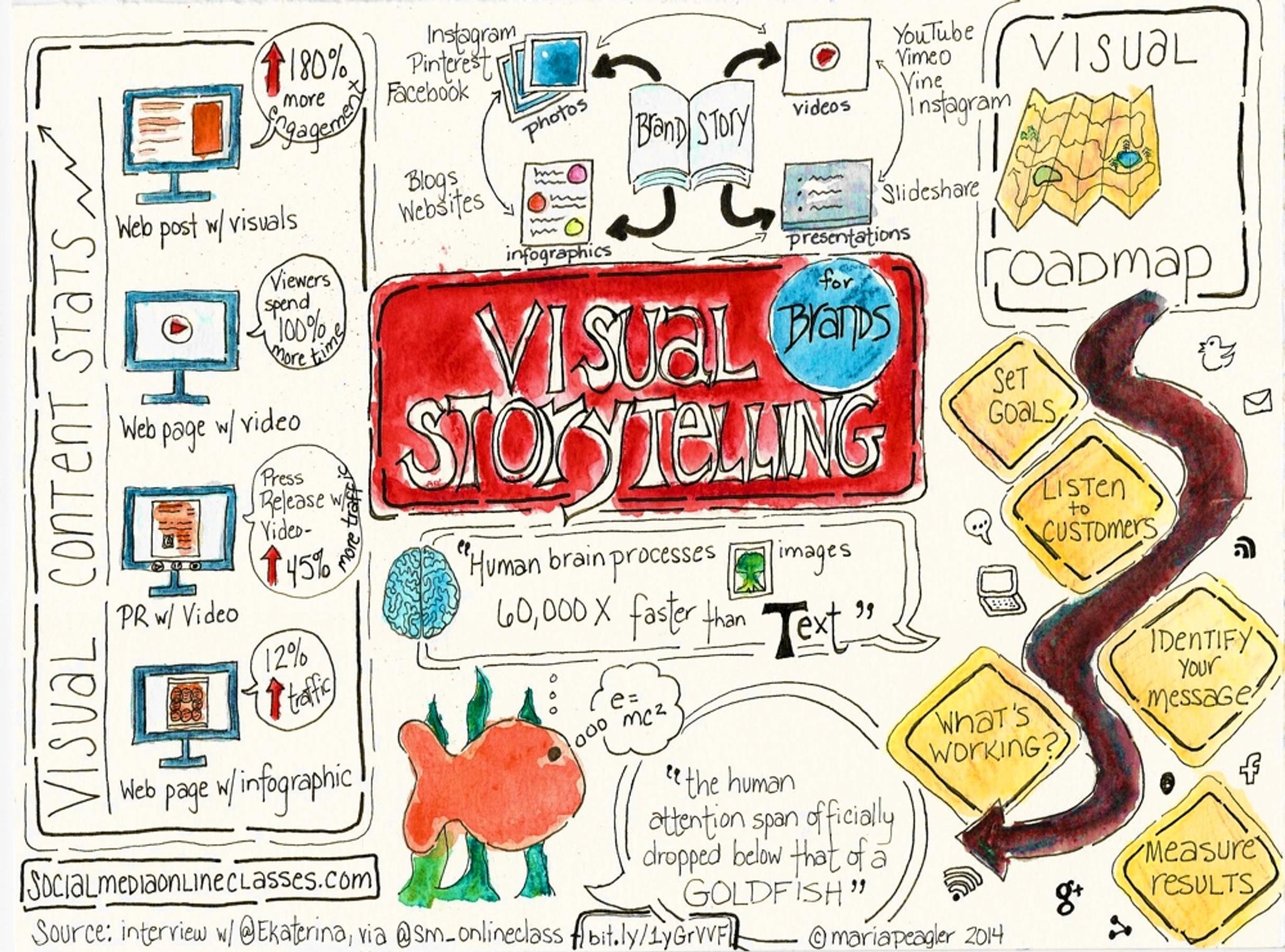
Different Types of Brand Stories
Founder Stories
Brand storytelling’s founder stories are one way that brands can create strong emotional connections with their customer base by sharing the brand’s story and maintaining a consistent brand's identity.
When people know how successful companies came into existence, they start feeling close towards it rather than away from them being cold, disconnected business entities.
A case in point might be founder stories explaining why people began their companies as well as the challenges or obstacles encountered in starting them. This is important because it helps customers form a relationship with the brand and understand why they should trust it more.
Customer Stories
Customer stories are another example of brand storytelling that brings clients closer to an organization. When a company publishes other people’s experiences, users can connect better while building deeper loyalty with business operations.
A particular example might be customers’ testimonials, which describe how someone found value in this company’s product offering. With this kind of storytelling, other members feel more connected to the piece while fostering trust bonds between consumers and producers of goods.
Moreover, customer stories may also be utilized to present a business’s positive difference in its environs. Highlighting an organization’s endeavors to provide for those in less privileged situations or back worthy causes that matter to its clients creates stronger bonds with customers, showcasing CSR.
Employee Tales
Captivating brand stories, particularly those centered around employees, are an efficient way for businesses to communicate differently with customers and build their brand.
This shows that companies are committed to aiding and fostering talent by displaying their team members’ positive attributes, experiences, and accomplishments.
Consequently, this allows enterprises to appeal personally to their clients, thus promoting loyalty and engagement over time. Besides, employee tales can serve as a platform through which a company’s mission, vision, or values can be well-known by customers.
Social Impact Stories
These social impact stories are key in brand storytelling because they help businesses form meaningful connections with consumers. By showcasing how their company has made a positive difference outside the business premises, firms can demonstrate that they care about society, thus evoking deeper emotional ties between customers and the company.
Some brand storytelling examples include donating goods or services to those who need them most, supporting causes that matter both personally or publicly, and reducing waste materials during production, among others.
In this case, one is able to understand what a particular organization believes in and why one should trust it, hence stronger relationships with brands.
Source: Contently
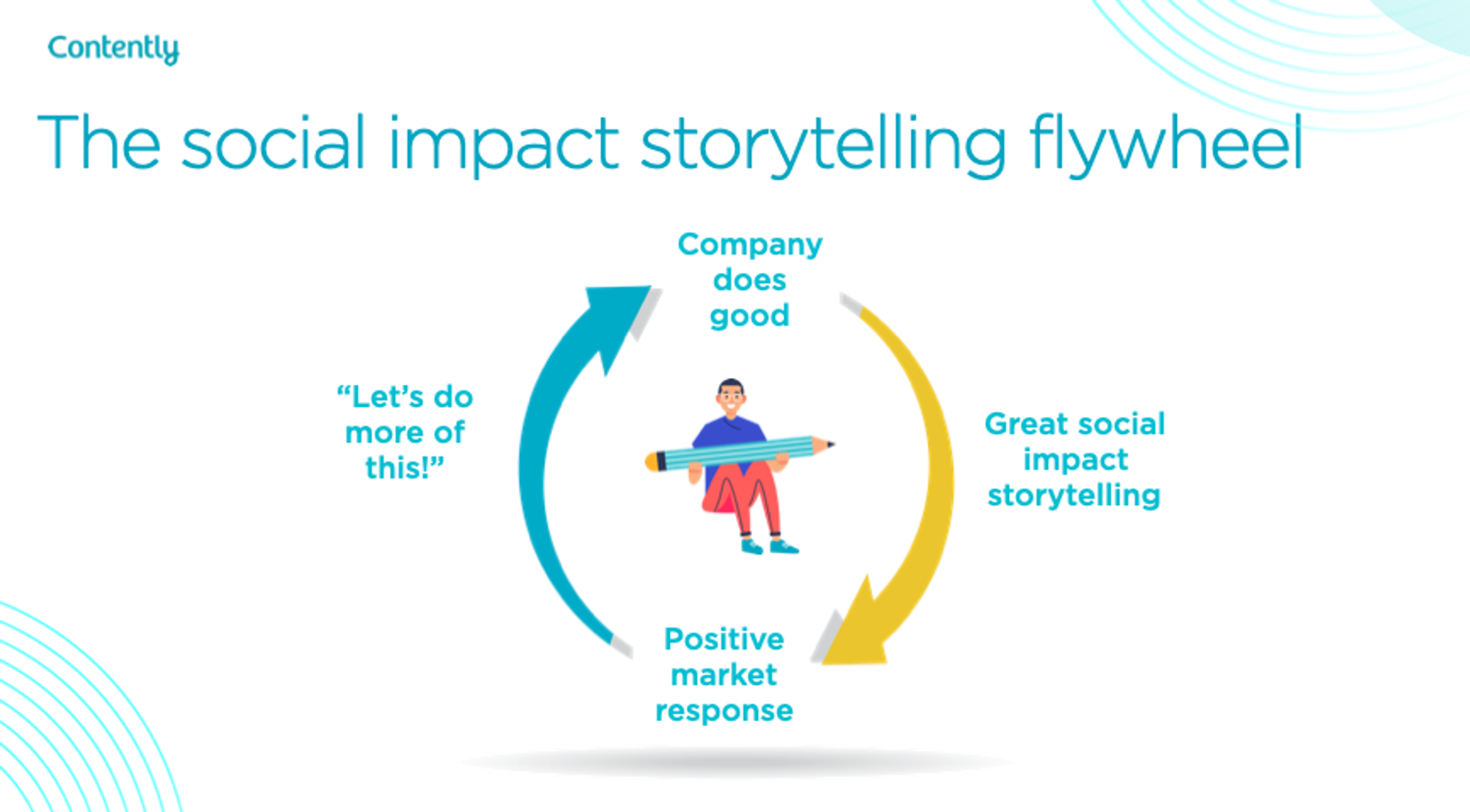
Crafting Your Brand Story
Crafting a compelling brand story requires a deep understanding of your brand’s values, mission, and purpose. It’s essential to define your brand’s narrative and ensure that it resonates with your target audience. Here are some key elements to consider when crafting your brand story:
Establish Your Origin Story
Your origin story is the foundation of your brand’s narrative. It’s the story of how your brand came to be, and what drives your mission and values. Your origin story should be authentic, relatable, and inspiring.
It should also highlight your brand’s unique personality and tone. By sharing your origin story, you can create an emotional connection with your audience and establish a strong brand identity.
Build Your Hero’s Journey
The hero’s journey is a storytelling framework that can help you build a compelling brand narrative. It’s a journey that your target audience can relate to, and it should be at the heart of your brand’s story.
The hero’s journey consists of three key elements: the ordinary world, the call to adventure, and the return with the elixir. By using this framework, you can create a brand story that resonates with your audience and inspires them to take action.
Define Your Brand Purpose and Values
Your brand purpose and values are the core of your brand’s narrative. They define what your brand stands for and what drives your mission. Your brand purpose should be clear, concise, and inspiring, and it should be reflected in every aspect of your brand’s story.
Your brand values should also be well-defined and authentic, and they should guide every decision you make as a brand. By defining your brand purpose and values, you can create a strong brand identity and establish a loyal following.
A Guide to Brand Storytelling
Develop Your Core Message
Establishing your core message, which highlights your brand's mission, is critical for successful brand storytelling processes. An overarching concept should connect all your content together, giving it direction and purpose.
Therefore, it should be easier for you to develop your core message, which highlights your brand’s values, mission, and vision, into something digestible by everyone in your target audience.
When developing your core message, there are several things you must consider. First, think about the brand’s story you want to tell and what makes it unique in its context. Are there features of products or services that distinguish them from others?
Or do you want to motivate people using a compelling narrative? When you ask yourself these questions, developing an engaging core message that will resonate with your customers more deeply will be easier.
Pick Out Your Target Audience
Targeting your target audience is one of the most important steps in marketing. Knowing who you are trying to reach and why they act, what they like, and what they want will enable you to develop compelling stories.
The process begins with getting to know your potential clients and people who use your products better so that you can distinguish common features among them. Demographic data such as age, gender, location, profession, hobbies, etc., can help businesses better understand the type of people they’re targeting.
Source: Venture Harbor
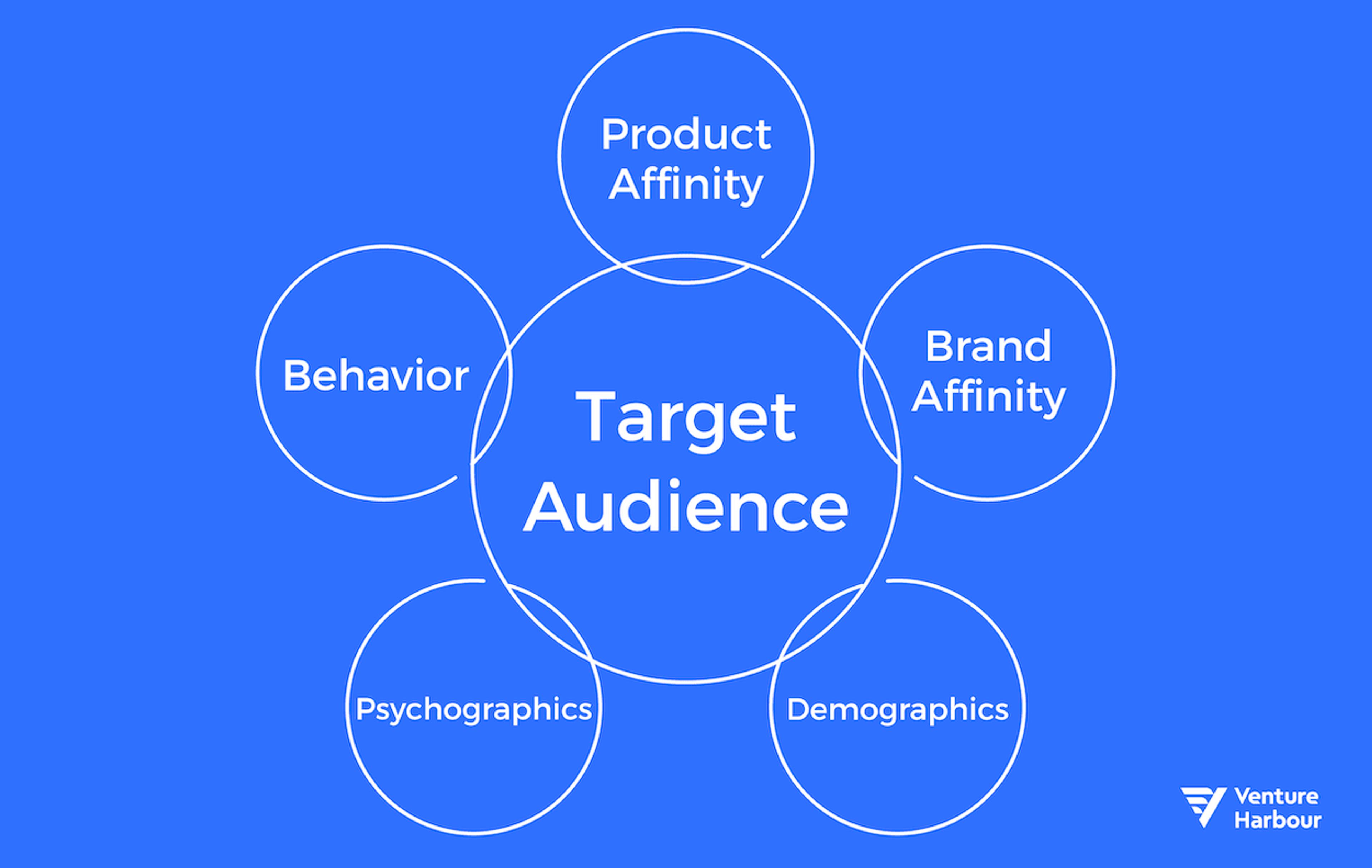
It also incorporates psychographic data such as values, lifestyle choices, brands’ or products’ attitudes, and media usage habits, among others, that influence consumer behavior patterns.
By gathering this information from various sources (e.g., surveys or focus groups), companies can have a clearer picture of their target audiences and, hence, be able to adjust their storytelling and marketing efforts more efficiently.
Additionally, companies need to observe customers’ behavior on several channels, such as website visits, purchases, or interactions with content and ads, for insights into how customers engage with the brand online.
This ensures the right message reaches the appropriate person at an optimal time, making it easier for firms to make meaningful connections with their customers.
Find Out Which Channels You’ll Utilize to Reach Your Target Market
The next step after determining one’s target market is determining which platforms are best suited for reaching them. Enterprises must send messages that will reach their intended audiences in the most effective way possible. Companies should assess different platforms available if they are going to pick those whose needs suit their targeted market well.
Social media marketing is amongst the favorite ways to contact targeted groups since firms can reach huge numbers of people at a low cost through this.
These platforms include Facebook, Twitter, Instagram, and YouTube, among others, where companies can create different kinds of content for their customer types at scale.
Other major channels include email marketing campaigns, search engine optimization (SEO), pay-per-click (PPC) advertising campaigns, influencer outreach programs, and traditional media outlets like print and broadcast.
Source: GeeksforGeeks
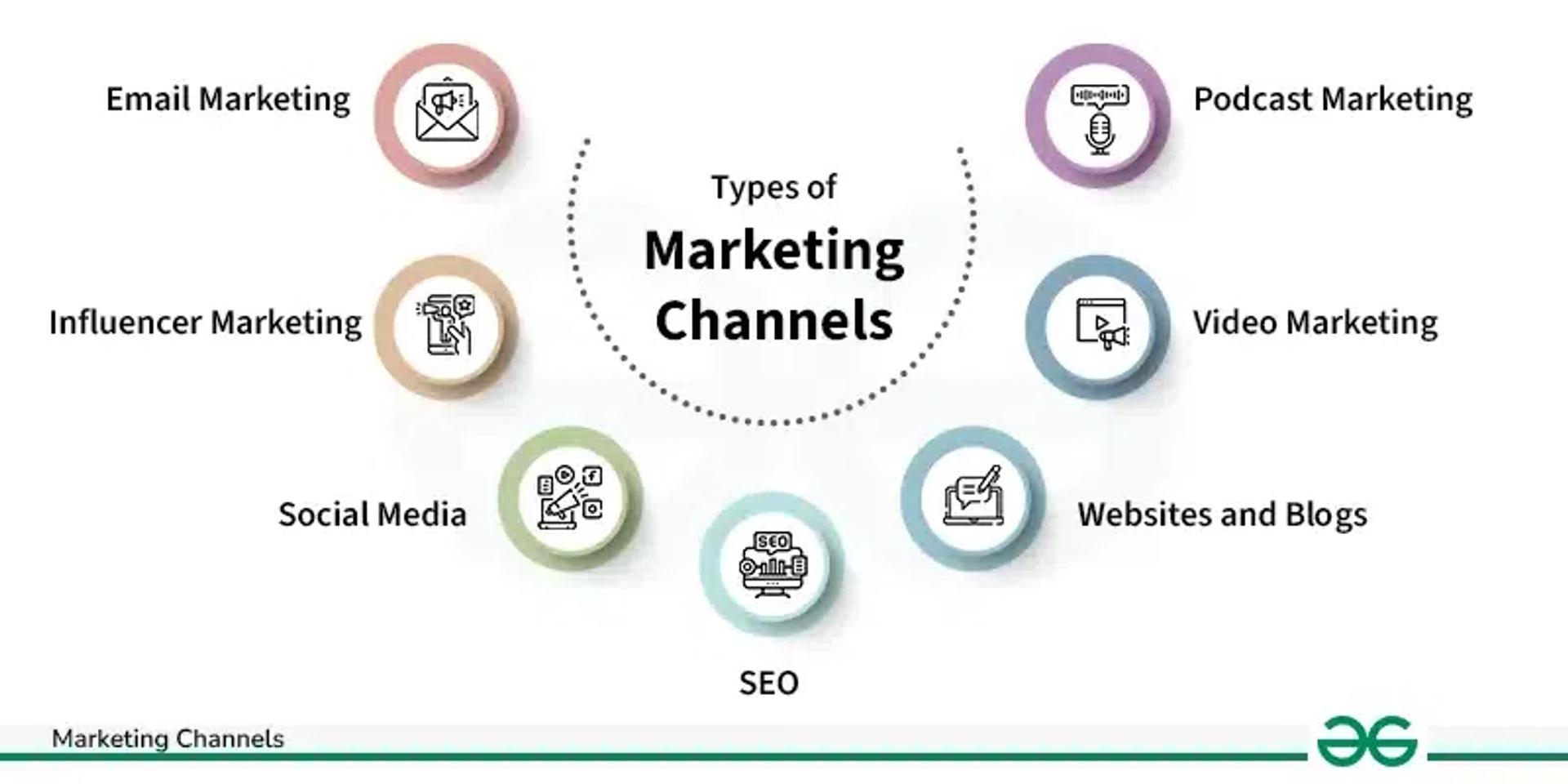
Visuals and Copywriting: Ingredient of Engaging Narrative
Businesses must create an engaging narrative through visuals and copywriting to penetrate their target, including departments like human resources. Companies should embed visuals in their storytelling as they are a powerful way to grab attention, evoke emotions, and recount stories. This will help take advantage of every opportunity that interests the viewer.
Copywriting is also significant when writing stories. Companies should use easy-to-understand language that resonates with the audience while keeping them captivated. Additionally, they should ensure their content is accurate and conveys the right message to build customer trust.
This may involve fact-checking claims made in stories or ensuring that advertising content complies with legal requirements such as no deceptive practices or proper use of testimonials. Lastly, companies should utilize technology to enhance their storytelling efforts.
AI-driven tools can optimize copy for search engine queries and personalize visuals based on customer preferences — helping companies craft engaging messages explicitly tailored for individuals across multiple channels with minimal effort.
This will make it possible to manage meaningful narratives through research methods blended with current technologies for finding stories customers love — over time!
Measuring and Optimizing Brand Storytelling
Monitoring and Measuring Brand Storytelling Success
To measure the success of your brand storytelling efforts, it’s essential to track key performance indicators (KPIs) such as engagement rates, website traffic, and social media metrics. These metrics provide valuable insights into how well your brand stories are resonating with your target audience.
Using analytics tools, you can monitor the performance of your brand stories and identify areas for improvement. Tools like Google Analytics, social media analytics, and content performance dashboards can help you understand which stories are driving the most engagement and which ones need refinement.
Conducting regular surveys and focus groups is another effective way to gather feedback from your target audience. These methods allow you to understand how your brand stories are perceived and what emotional connections they are creating. Use this feedback to refine your brand storytelling strategy and make data-driven decisions.
The Power of Emotional Connection in Brand Storytelling
Using Emotional Responses to Create Strong Connections
Emotional connections are a powerful way to create strong bonds with your target audience. By using storytelling techniques such as vivid imagery, metaphors, and anecdotes, you can evoke emotions and create a sense of empathy with your audience. These emotional responses can make your brand story more memorable and impactful.
User-generated content is an excellent way to create a sense of ownership and authenticity with your audience. When customers share their own stories and experiences with your brand, it adds a layer of credibility and relatability that can strengthen emotional connections.
Incorporating social and environmental responsibility into your brand story can also create a sense of purpose and meaning with your audience. Highlighting your brand’s commitment to social causes and sustainability can resonate deeply with customers who share these values, fostering brand loyalty.
Influencer marketing is another effective strategy for reaching new audiences and creating a sense of credibility with your brand. Influencers can share your brand story in a way that feels authentic and trustworthy, helping to build emotional connections with their followers.
Brand ambassadors and employee advocacy can also play a significant role in creating a sense of authenticity and trust with your audience. When employees and loyal customers share their positive experiences and stories, it humanizes your brand and makes it more relatable.
Customer testimonials are a powerful tool for creating social proof and credibility with your audience. Real-life examples of how your brand has positively impacted customers can evoke strong emotional responses and build trust.
By leveraging these strategies, you can create compelling brand stories that resonate emotionally with your target audience, fostering deeper connections and long-term brand loyalty.
Compelling Brand Story Examples
Patagonia’s Environmental Activism
Patagonia is known for its environmental activism. For over forty years, this outdoor apparel and gear company has committed itself to “causing no unnecessary harm” in all its products and practices concerning the environment.
Patagonia has undertaken various initiatives aimed at reducing its environmental footprint, such as using organic cotton, among other natural fabrics, in making clothes that can be recycled or upcycled when worn out.
The company has also turned to social media platforms to share different climate change impacts, like these ones on global warming. It regularly posts pictures on Instagram by founders and employees using Patagonia products outdoors, supporting key environmental causes and creating an interesting storyline that touches people.
Source: Patagonia

Coca-Cola’s “Share a Coke” Campaign
Coca-Cola’s “Share a Coke” campaign was an immensely successful marketing initiative that redefined customer engagement. The campaign began in Australia and spread to other countries, such as the US.
It involved printing people’s names on cans of Coca-Cola, encouraging them to share drinks with friends and family. Creating a fun and personal story using both visuals and copywriting enabled this, something that has never been witnessed before.
Source: Coca-Cola United

Read More
Conclusion
Businesses have numerous options for crafting a brand's story that resonates with customers, from leveraging social media platforms and content marketing to developing engaging visuals and copywriting.
Taking full advantage of AI-driven technologies can amplify these efforts through message optimization for search engine queries and personalizing content based on customers’ preferences.
Traditional research methods combined with modern technological solutions create meaningful experiences explicitly tailored for different individuals across multiple channels, enabling organizations to build stronger relationships over time!


About Clay
Clay is a UI/UX design & branding agency in San Francisco. We team up with startups and leading brands to create transformative digital experience. Clients: Facebook, Slack, Google, Amazon, Credit Karma, Zenefits, etc.
Learn more

About Clay
Clay is a UI/UX design & branding agency in San Francisco. We team up with startups and leading brands to create transformative digital experience. Clients: Facebook, Slack, Google, Amazon, Credit Karma, Zenefits, etc.
Learn more


